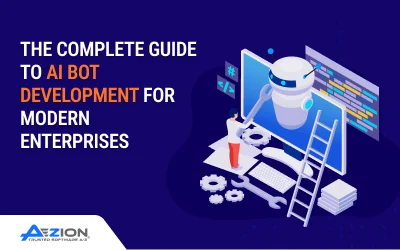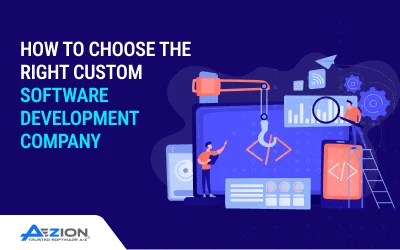5 Types of Cloud Computing: What Are They and How Do They Work?
Digital transformation is becoming a core business function. One key element to that transformation is cloud computing, which provides tools to scale while embracing agility and innovation. This approach removes the need to manage complex infrastructure, as third-party vendors offer on-demand access to infrastructure services over the internet. This gives companies ready access to the tools they need to streamline their business. Additionally, these resources use a subscription-based, on-demand model, which means companies only pay for the services they use.
Cloud computing comes in four forms. Each type has separate features and benefits we’ll explore below.
Infrastructure as a Service (IaaS)
IaaS provides core infrastructure over the internet through machine virtualization. Vendors offer infrastructure items such as servers, load balancers, and storage via subscription. Companies have control over their virtual environment through remote access.
IaaS has many benefits, such as:
Flexibility: IaaS resources such as virtual machines, storage devices, bandwidth, IP addresses, monitoring services, firewalls, etc. are available to rent. Organizations only pay for the amount of time they keep a resource.
Interoperability with Legacy Systems: It is possible to maintain legacy between applications and workloads between IaaS clouds. For example, network applications such as web servers and e-mail servers that normally run on customer-owned server hardware can also run from VMs in the IaaS cloud.
Software as a Service (SaaS)
SaaS refers to software accessed over the internet. In SaaS, the vendor provides and manages the software on vendor-managed platforms. A few common types of SaaS applications include:
Customer Relationship Management (CRM)
Help Desk systems
Human Resource (HR) systems
Billing and Invoicing
Companies can change and customize these systems via configuration or Application Programming Interfaces (APIs). But some systems are not customizable. SaaS comes with many benefits, including:
Data Management: The vendor manages the data.
Ease of Administration: Software management through a singular location.
Ease of Configuration: All users run the same version of the software.
Easily Scalable: Licenses are available on-demand. Companies only buy what they need. Companies can add or delete users at any time.
Cost-Effective: Purchasing licenses on-demand means there is no need to buy bulk licenses.
Simple Deployment and Configuration: There is little or no client-side installation or configuration.
Platform Management: The vendor provides all necessary resources to support the software. Vendors handle platform items such as backups, security, hardware refreshes, and system maintenance.
Platform as a Service (PaaS)
Developing and managing application development environments is complex. With PaaS, the vendor provides the runtime environment for applications. The vendor also provides the tools required to develop applications. Many also include point-and-click tools that enable non-developers to create web applications. This approach supports the framework for microservices. PaaS comes with several benefits, which include:
Scalability: Resources can automatically scale up or down as needed.
Lower Cost of Ownership: Companies do not need to worry about administration costs. The cloud provider manages the development environment, such as hardware, servers and storage.
Current Software: Companies can access the most recent versions of software in their environment.
Function as a Service (FaaS)
With FaaS, customers develop, run, and manage applications via a serverless architecture. With serverless, companies execute modular chunks of code that run independently.
Serverless allows companies to develop and update these modules on the fly. Developers configure these modules to run in response to an event. For example, clicking on an element in a web app. This approach to building applications is known as microservices architecture. The benefits of FaaS include:
Reduces Code Complexity: This approach reduces complexity in the codebase.
Improved Developer Velocity: FaaS allows developers to focus on writing code. The cloud provider handles server allocation and manages backend resources.
Built-In Scalability: Microservices are easily scalable. Thus, developers won’t have to worry about writing custom code to handle high traffic. The vendor manages all scaling.
Cost-Efficient: Vendors do not charge clients for idle computation time. Customers only pay when their code executes
Container as a Service (CaaS)
With CaaS, third-party vendors offer container-based architecture in the cloud. This architecture includes container engines, container orchestration and the underlying services. In this way, it is easier for customers to manage their container-based systems at scale. CaaS lets developers automate the deployment of containers across many cloud environments.
CaaS does not rely on one code stack or language. As such, companies can take advantage of multi-cloud and hybrid-cloud environments. CaaS is deployed in an IaaS model. However, the primary resource is a container rather than a virtual machine. The many benefits of CaaS include:
Consistent Environments: CaaS eliminates environmental inconsistencies and makes testing and debugging easier.
Security: With CaaS, applications execute application processes in isolation from the operating system and don’t require specific software to run. CaaS enables fast deployment of updates and security patches.
Scalability: Containers can be horizontally scaled by adding more containers to the same cluster.
Next Steps
There’s a wealth of value in leveraging cloud computing, which gives you the flexibility you need to scale your business up or down while keeping costs manageable. Reach out to Aezion to discuss how you can best use cloud computing in your environment.



